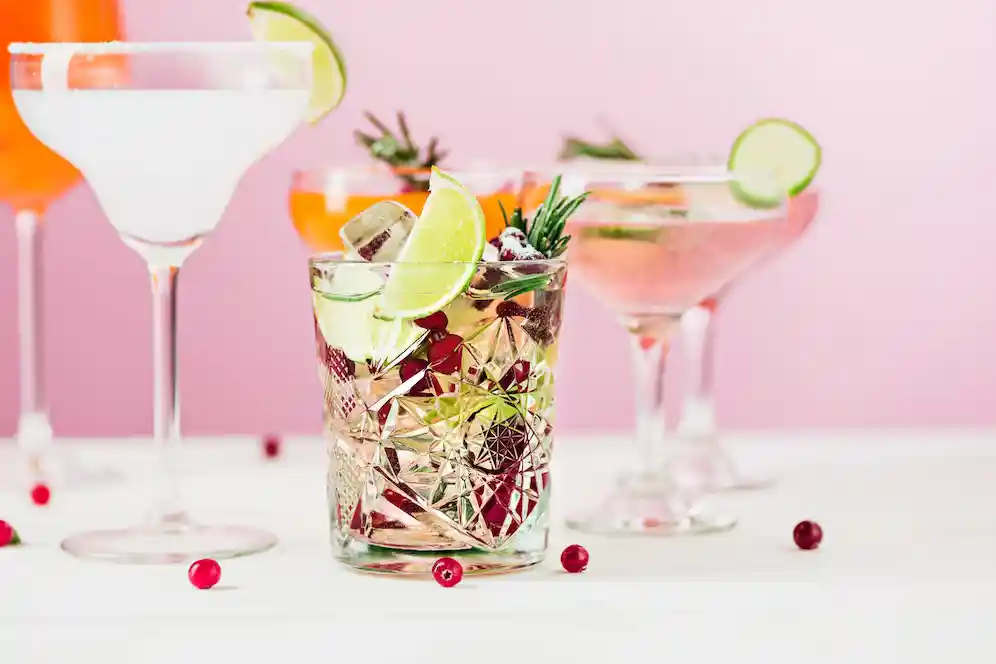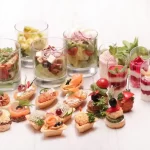Cocktails are not only about the taste, but also the presentation. A beautiful cocktail garnish can transform a good drink into a great one. Garnishes add visual appeal, texture, and flavor to the cocktail. In this article, we will explore the art of cocktail garnishes and provide you with a guide to creating the perfect garnish for your cocktails.
1. Introduction
Cocktail garnishes have been used for centuries to enhance the taste and presentation of cocktails. A well-crafted garnish can transform a simple cocktail into a work of art. In this article, we will explore the different types of garnishes and provide you with tips and tricks to create beautiful and delicious garnishes for your cocktails.
2. Importance of Garnishes in Cocktails
Garnishes are not only used for decoration purposes, but also to enhance the taste and aroma of the cocktail. For example, a citrus twist can add a burst of flavor to a simple gin and tonic. A sprig of mint can add freshness and aroma to a mojito. Garnishes can also add texture and visual appeal to a cocktail, making it more attractive and enticing to the consumer.
3. Types of Garnishes
There are many types of garnishes that can be used in cocktails. Here are some of the most popular ones:
3.1 Fruits and Vegetables
Fruits and vegetables are the most common types of garnishes used in cocktails. Citrus fruits such as lemons, limes, and oranges are often used to add a burst of flavor to cocktails. Other popular fruits include berries, melons, and tropical fruits such as pineapple and mango. Vegetables such as cucumber and celery can also be used as garnishes.
3.2 Herbs and Spices
Herbs and spices are another popular type of garnish used in cocktails. Mint, basil, and rosemary are often used to add freshness and aroma to cocktails. Spices such as cinnamon, nutmeg, and ginger can also be used to add warmth and depth of flavor to a cocktail.
3.3 Edible Flowers
Edible flowers such as lavender, rose, and hibiscus are becoming increasingly popular as garnishes in cocktails. They not only add visual appeal but also a delicate floral aroma and flavor to the cocktail.
3.4 Candy and Chocolate
Candy and chocolate can also be used as garnishes in cocktails. A piece of chocolate or a candy stick can add a touch of sweetness to a cocktail, while also adding visual appeal.
3.5 Salt and Sugar
Salt and sugar can be used to rim the glass of a cocktail, adding a salty or sweet taste to each sip. This technique is commonly used in margaritas and daiquiris.
4. How to Choose the Right Garnish
Choosing the right garnish for a cocktail can be a daunting task, but it doesn’t have to be. When choosing a garnish, consider the flavor profile of the cocktail and the occasion for which it is being served. For example, a tropical drink may benefit from a fruity garnish, while a classic martini may be best served with a simple citrus twist. Consider also the colors and textures of the garnish, as they can greatly enhance the presentation of the cocktail.
5. Tips for Creating Beautiful Cocktail Garnishes
Creating beautiful cocktail garnishes is an art that requires practice and attention to detail. Here are some tips to help you create stunning garnishes for your cocktails:
5.1 Keep it Simple
Less is often more when it comes to garnishing cocktails. Stick to one or two garnishes that complement the flavors of the cocktail, and avoid overloading the drink with too many ingredients.
5.2 Use Fresh Ingredients
Using fresh, high-quality ingredients is essential when creating cocktail garnishes. Not only do fresh ingredients taste better, but they also look more vibrant and appealing.
5.3 Pay Attention to Colors and Textures
The colors and textures of the garnish should complement the colors and textures of the cocktail. For example, a bright orange twist can add a pop of color to a pale yellow cocktail. A sprig of rosemary can add texture and depth to a green cocktail.
5.4 Be Creative
Don’t be afraid to experiment with different garnishes and techniques. Get creative with your garnishes and try out new flavors and combinations.
5.5 Practice Makes Perfect
Creating beautiful cocktail garnishes takes practice. Keep experimenting and trying new techniques until you find the perfect garnish for your cocktail.
6. Conclusion
Cocktail garnishes are an essential part of cocktail-making. They add flavor, texture, and visual appeal to the drink, making it more enticing and enjoyable. By following the tips and techniques outlined in this article, you can create beautiful and delicious garnishes for your cocktails that will impress your guests and enhance the overall drinking experience.
7. FAQs
- Can I use any type of fruit as a garnish for my cocktail?
While most fruits can be used as garnishes, it is important to consider the flavor profile and color of the cocktail. Fruits that complement the flavors and colors of the cocktail work best.
- Are there any rules for using edible flowers as garnishes?
Edible flowers should be used sparingly and only if they complement the flavors of the cocktail. Avoid using flowers with a strong, overpowering taste.
- Can I use dried herbs and spices as garnishes?
While fresh herbs and spices are recommended for garnishing cocktails, dried herbs and spices can be used in a pinch. However, they may not provide the same fresh aroma and flavor as fresh ingredients.
- Can I use candy and chocolate as garnishes for non-alcoholic drinks?
Yes, candy and chocolate can be used as garnishes for non-alcoholic drinks such as milkshakes and smoothies.
- How do I know when I have added too much garnish to my cocktail?
If the garnish is overpowering the flavors of the cocktail or making it difficult to drink, then you may have added too much. Remember to keep it simple and let the flavors of the cocktail shine.



